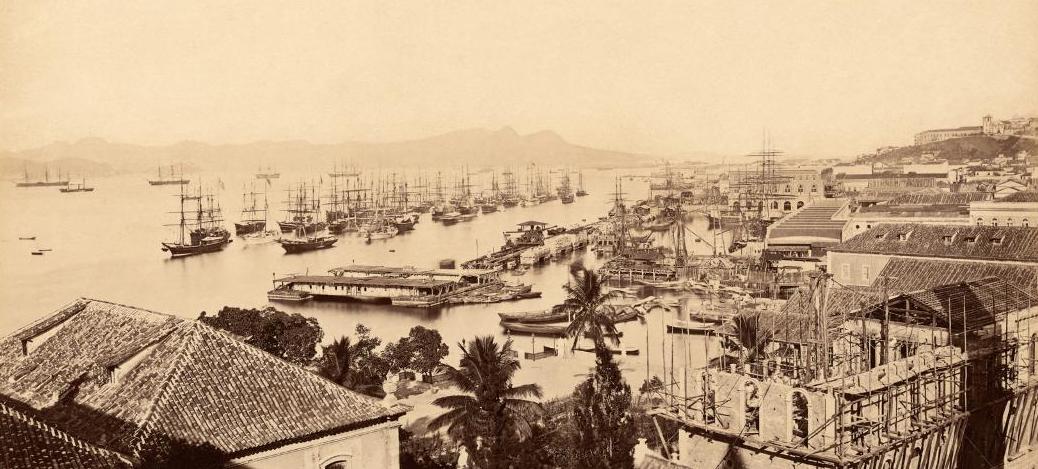A New History of Print in Ottoman Cairo
hosted by Nir Shafir
We often regard print as a motor of social change, leaving revolutions in its wake, whether political and religious. For historians of the Middle East, this line of thought always leads to the (predictable) question: why didn’t Muslims or Ottomans or Arabs adopt print? In this episode, Kathryn Schwartz discusses why this question is often poorly posed and then delves into an in-depth look at how and why people used print in one particular historical context—nineteenth-century Cairo. Touching upon topics such Napoleon, Mehmed Ali, and the Bulaq press, we explore how print slowly and haphazardly embedded itself into various aspects of Egyptian learned life. This fresh history casts nineteenth-century Egypt in a new light by examining the technological adaptation of print not as an act of unstoppable and transformative modernity, but as a slow and incremental expansion of already existing practices of book production.
This episode is part of an ongoing series entitled "History of Science, Ottoman or Otherwise."
Stream via SoundCloud
PARTICIPANT BIOS
 |
Kathryn Schwartz is an Arabist and historian of the modern Middle East. She is currently the Postdoctoral Fellow for the Digital Library of the Eastern Mediterranean at Harvard. Kathryn earned her Ph.D. in History and Middle Eastern Studies from Harvard in 2015, and her B.A. in Arabic and Middle Eastern Studies from King’s College, the University of Cambridge in 2008. She is currently revising her dissertation into a book entitled "Print and the People of Cairo, 19th century." |
 |
Nir Shafir is a historian of the Middle East whose research examines the intersections of knowledge production, religious practice, and material culture in the early modern world (1400-1800). He curates Ottoman History Podcast’s series on history of science in addition to being one of the co-founders of hazine.info, a website that explores the archives and libraries of the Islamic world. He is currently Assistant Professor of History at the University of California, San Diego.
|
CREDITS
Episode No. 249
Release Date: 15 July 2016
Recording Location: Cambridge, MA
Editing and production by Chris Gratien
Sound excerpts: Baglamamin Dugumu - Necmiye Ararat and Muzaffer; Egil Daglar Ustunden Asam - Viktoriya Hanim; Harmandali - Recep Efendi, Cemal Efendi
Special thanks to Kara Güneş for allowing us to use the composition "Istanbul" in the intro music
Images and bibliography courtesy of Kathryn Schwartz
IMAGES
SELECT BIBLIOGRAPHY
“AHR Forum. “How Revolutionary Was the Print Revolution?”” The American Historical Review, 107:1 (2002): 84-128.
Carter, T. F. “Islam as a Barrier to Printing.” The Muslim World 33 (1943): 213-216.
Hanna, Nelly. In Praise of Books: a Cultural History of Cairo’s Middle Class, 16th-18th Century. Syracuse University Press, 2003.
İhsanoğlu, Ekmeleddin and Humphrey Davies (trans.). The Turks in Egypt and their Cultural Legacy. The American University in Cairo Press, 2012.
Jabartī, ʻAbd ar-Raḥmān, Smuel Moreh (trans.), and Robert Tignor (intro.). Tārīkh Muddat al-Faransīs bi Miṣr; Napoleon in Egypt: Al-Jabartî's Chronicle of the First Seven Months of the French Occupation, 1798. M. Wiener, 1993.
Lane, Edward William. An Account of the Manners and Customs of the Modern Egyptians: Written in Egypt During the Years 1833-1835. East-West Publications, 1978.
Roper, Geoffrey (ed.). The History of the Book in the Middle East. Ashgate, 2013.
Sajdi, Dana. “Print and Its Discontents. A Case for Pre-Print Journalism and Other Sundry Print Matters.” The Translator 15:1 (2009): 105-138.
Schwartz, Kathryn. “Did Ottoman Sultans Ban Print?” Book History, forthcoming.
Schwartz, Kathryn. “The Political Economy of Private Printing in Cairo, as Told from a Commissioning Deal Turned Sour, 1871.” International Journal of Middle East Studies, forthcoming.
Strauss, Johann. The Egyptian Connection in Nineteenth-Century Ottoman Literary and Intellectual History. Orient-Institut der Deutschen Morgenländischen Gesellschaft, 2000.
Yousef, Hoda A. Composing Egypt: Reading, Writing, and the Emergence of a Modern Nation, 1870-1930. 2016.













Comments
Post a Comment
Due to an overwhelming amount of spam, we no longer read comments submitted to the blog.